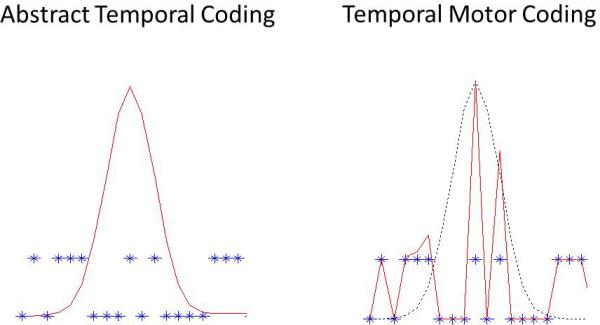Figure 3.

Graphical representation of two different mechanisms for temporal coding. The red lines in the figures show the firing pattern of a temporally sensitive striatal neuron, while the blue crosses indicate the concurrent behavior. In contrast to Figure 2, in which the behavior showed temporal control, thereby preventing a dissociation between motor and abstract timing, we have intentionally disrupted the behavior in this example so that it does not show temporal control. The figure on the left represents an “abstract temporal code” in which the neuron's firing rate peaks around the expected time of reinforcement. The behavior in this coding scheme is generated downstream from the striatum, such that although there is temporally informative activity in the striatal neuron, the behavior does not necessarily reflect this activity. In contrast, the figure on the top right represents temporal motor coding. In this case, the neuron's activity is driven by the behavior, but temporal information (represented here as the black dotted line) modulates the firing rate. Thus in this scheme, the behavior and time are represented in an integrated manner within the striatal neuron.
